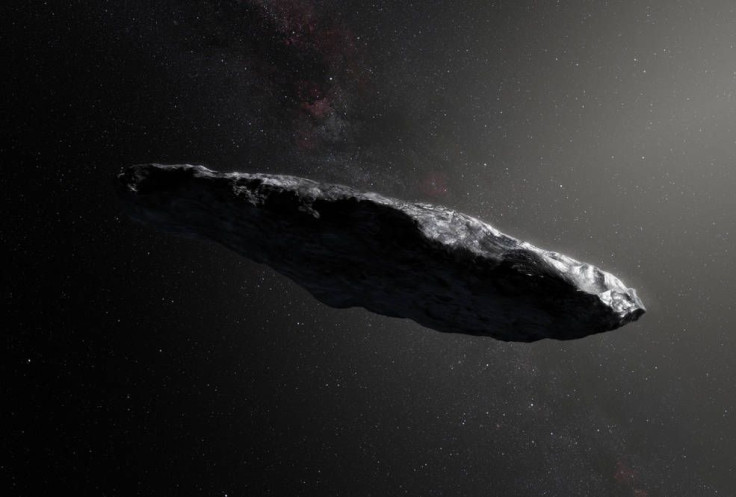Oumuamua: Why Cigar-Shaped Interstellar Asteroid Got Unexpected Boost In Speed

Back in 2017, astronomers got a chance to witness the first known interstellar object in our solar system — a cigar-shaped asteroid that came from some another star system and whizzed through our neighborhood. The detection made headlines across the globe and led many to think the strange space rock, now called Oumuamua, could be an alien probe or something.
Though the theory was not proven and Oumuamua is now on its way to leave the solar system, an international team of scientists recently noted an anomalous behavior – the object is moving away from the sun faster than expected.
Using observational data from Hubble Space Telescope and a bunch of ground-based observatories, the researchers took a close look at the space rock and found it got an unexpected boost in speed and shift in trajectory.
“Our high-precision measurements of ′Oumuamua’s position revealed that there was something affecting its motion other than the gravitational forces of the Sun and planets,” Marco Micheli, the lead author of the study, said in a NASA statement.
While this may sound a little spooky, the researchers explored several scenarios that could have given a rise to such behavior and came to the conclusion this was typical for a comet, which is being heated by solar energy and venting out gas and dust as a result.
"We think this is a tiny, weird comet," Micheli added in another statement. "We can see in the data that its boost is getting smaller the farther away it travels from the Sun, which is typical for comets." As of June 1, the object was moving at a speed of 114,000 kmph or 70,000 mph.
The expulsion of gaseous material, a process typically known as outgassing, has been widely noticed in several cometary bodies in our solar system. The ejection leads to the formation of a cloud called “coma” and a tail of material.
However, when Oumuamua first came to notice, no such visual signs were detected. The group never expected to see a gain in speed from the cigar-shaped rock, but the latest findings indicate the object is emitting a very small amount of material. This, as they said, would be enough to provide a small push to the object’s speed, as they observed, but not enough to be detected.
Adding further details, Karen Meech, another author of the study, posited small dust grains on the surface of the object would have eroded away throughout its interstellar journey, leaving only larger particles to be vented. A cloud from the larger grains would not have been bright enough to be observed from Hubble.
"The true nature of this enigmatic interstellar nomad may remain a mystery," team member Olivier Hainaut from European Southern Observatory concluded. “Oumuamua's recently-detected gain in speed makes it more difficult to be able to trace the path it took from its extrasolar home star."
The study titled, “Non-gravitational acceleration in the trajectory of 1I/2017 U1 (`Oumuamua),” was published June 27 in the journal Nature.
© Copyright IBTimes 2025. All rights reserved.





















